Marine Radar Explained: How to Track and Avoid Other Vessels
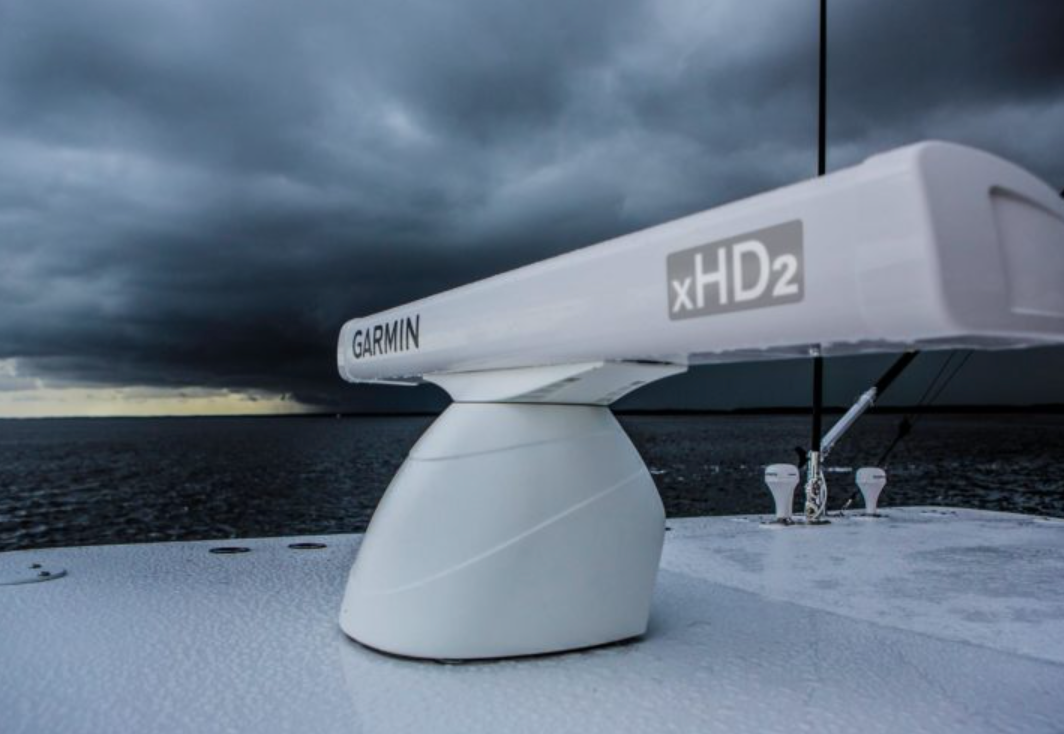
Marine radar is the best collision-avoidance system ever developed for the recreational boater. Radar systems let a user “see” through darkness, fog and stormy weather conditions. Once used only on large vessels, radar units are now compact, draw little electricity and are sized to fit boats as small as 18’ (5.5 m) long. When combined with AIS and a modern electronic plotter with up-to-date digital charts, radar can be a real lifesaver.
Are Your Electronics Compatible with Radar?
Compatibility is a key question if you’re considering adding radar. Many chartplotters and GPS/fishfinder combos are not compatible with radar. Some examples are the Garmin echoMAP series, Raymarine Dragonfly Pro, Lowrance Elite, Simrad GO7 or B&G Vulcan.
In general, multifunction displays can operate a radar unit, while smaller or more basic combos — especially those intended for inland fishing applications — cannot. If you’re considering a new suite of electronics for your boat, or if you’re thinking of adding radar to your current equipment, look at compatibility first.

How Large is Your Boat?
Answering this question settles your choice between the two forms of radar units, the open array or the radome. Open arrays (where you can see the rotating arm turning) have the widest antennas, the narrowest beamwidth, between 3.5° and 1.1°, the sharpest focus for picking out small targets and the longest ranges. Open arrays are best for large powerboats with radar arches or pilothouses. They’re also used by hardcore anglers who want the most precise fish targeting — anglers who search for flocks of birds on some smaller fishing boats.
Radomes, with the moving parts inside an 18″ (45.72 cm) or 24″ (60.96 cm) dome, offer better mounting flexibility where space is limited. Horizontal beamwidths between 3.5° and 7° give sharp enough resolution, although small adjacent targets may get clumped together. Radomes are best for the walk-around fishing boat, RIB, small cruiser or sailboat. They also use less power than open arrays, an important consideration for long-distance cruisers.
How Far Do You Need to See?
This question, how much range you want from a radar, involves a couple of factors and some trade-offs. First, there’s the factor of height. Your radar can’t see over the earth’s curved horizon, so the height of your unit above the ocean surface, and the height of the target you’re looking at limit how far away you can identify objects.
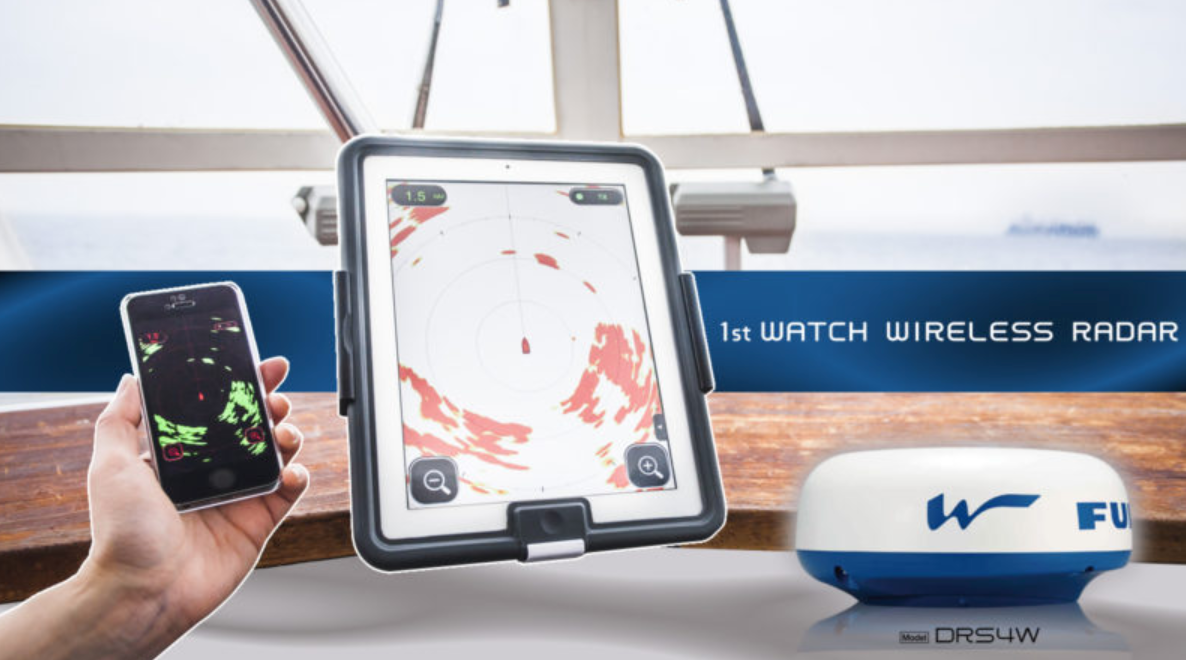
For the techies among us, here is a simple formula: (1.22 nautical miles x square root of height of radar) + (1.22 nautical miles x square root height of target). In simple English, it means that if your boat has an antenna on a T-top that’s 9’ (2.74 m) off the water and you’re searching on the screen for a boat that’s the same size, you’ll need to be within 7.3 nautical miles (1.22 x 3 + 1.22 x 3 = 7.32). That’s the best-case scenario, but since fiberglass isn’t a good radar reflecting material, you might have to be closer before you see the other boat.
Here comes the first trade-off: Installing the radar in a higher position increases the maximum range, but it also increases the minimum range around your boat, inside which targets cannot be detected. A fisherman looking for a stationary group of sport-fishing vessels (or birds that are feeding on fish) will want lots of range. But if the main purpose of installing radar is to see close-in pilings, moored boats or rocks in a foggy harbor, go for short-range performance.
Power Output
With radar, more power is better. Increased power lets a user see farther, but it is far less important than the height of antenna, the target height and the target’s ability to reflect radar. Transmitting power is more important in poor weather, since fog, drizzle, and rain absorb the energy and reduce radar range.
Outputs for traditional pulse-style recreational boating radars range from 4kW to 25kW. A boatowner who buys a 2kW or 2.2kW radar, will probably regret choosing a radar with a 24 nautical mile range. Typical range for a 4kW radar is 48 nautical miles (nm), so as the old saying goes, you get what you pay for.
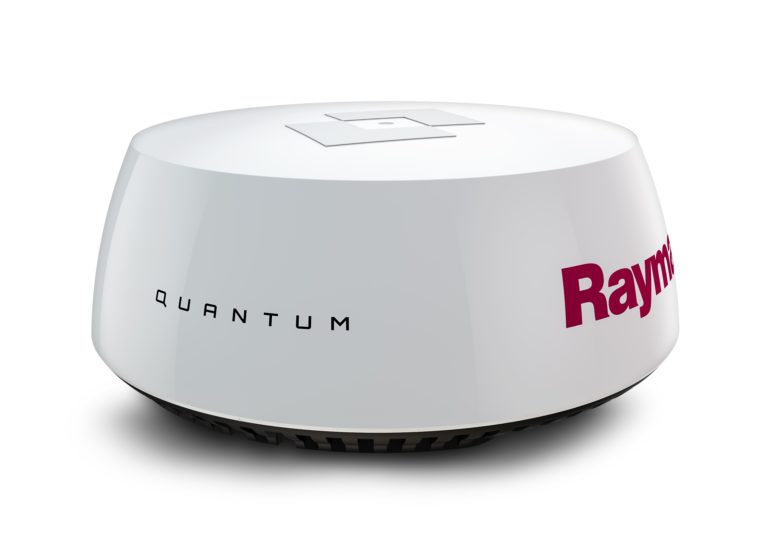
Two Technology Alternatives
So far, this has left out the two technology choices available in radar — our second trade-off involving how much range you need — the traditional “pulse” radar and new solid-state or broadband radar.
Traditional pulse radars use high-powered magnetrons to generate microwave signals with short pulses of applied voltage. New solid-state X-band radar technology utilizes FMCW (Frequency Modulated Continuous Wave) techniques. The technology, long used in military radar and recently available for commercial use, is roughly similar to CHIRP sonar.
Solid-state, broadband radar sends a continuous transmission wave with linear increasing frequency (hence the term broadband). The wave retains its frequency as it travels out and reflects back from objects. Meanwhile, the transmitter continues to output an increasing frequency. The difference between the currently transmitted and received frequencies, coupled with the known rate of frequency increase, is the basis for precisely calculating a “time of flight” and target distance. Since FMCW constantly builds up radar return energy (vs. a single “main bang” pulse), this system provides target detection superior to pulse radars while transmitting at far lower energy levels.
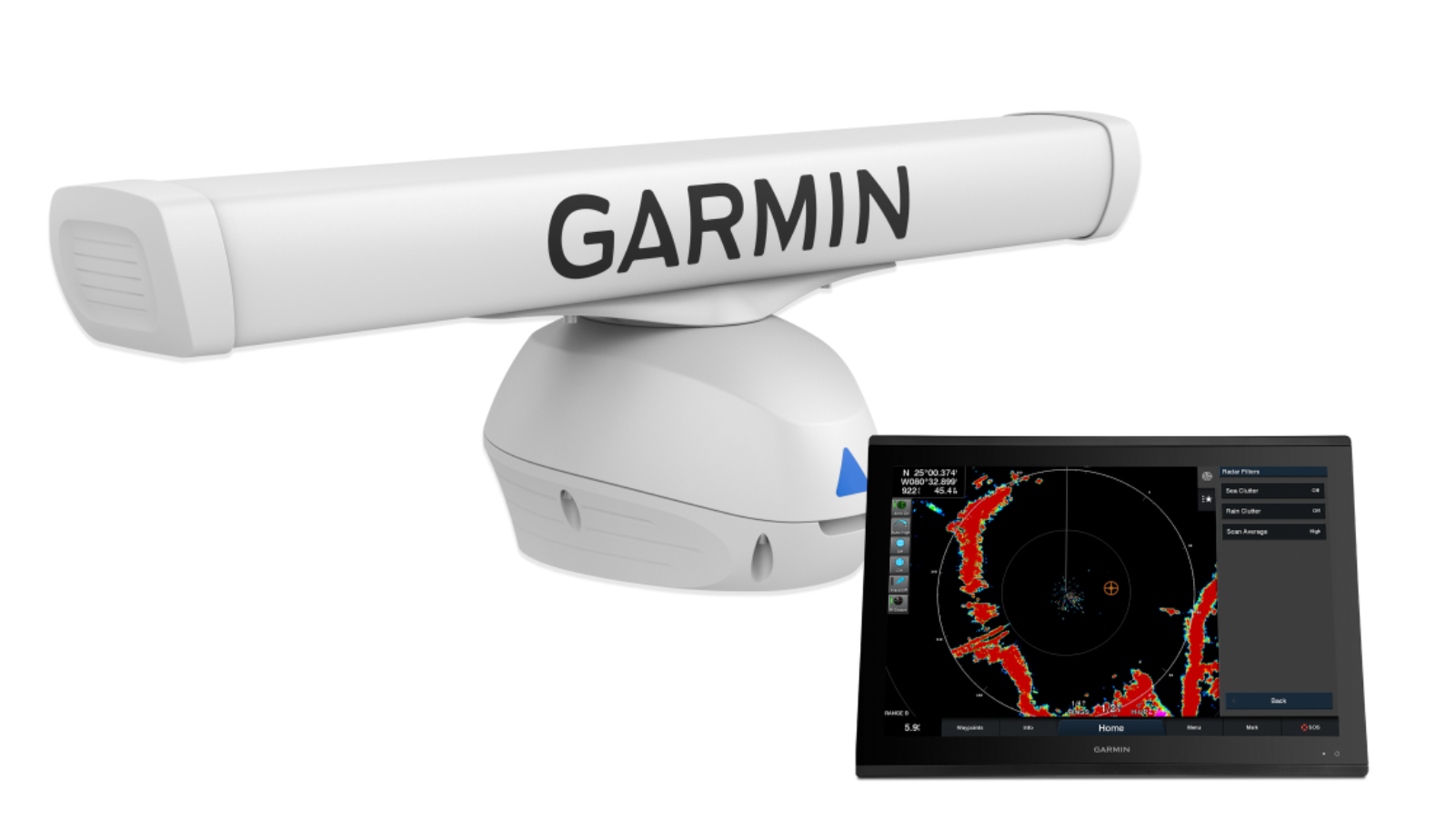
Advantages of Solid-State Radar Over Pulse Radar
- The solid-state radar has the Lowest RF transmission for safe, flexible installation. For example, Navico’s Broadband Radar 3G transmits at 1/20,000 the power of typical pulse radars (emitting about 1/5 the energy of an average cell phone), so the radome is safe to mount in locations never before possible. Additionally, the lowest DC power draw of any X-band marine radar (1.45 amps) makes this system well suited for sailboats and other vessels with limited power. Even the most powerful solid-state open array radars transmit at 40 watts compared to 4,000 watts for a small traditional pulse radar.
- Solid-state radar provides better target resolution, even at a 1/32 nm range. Docks, channel markers, moored vessels and other critical targets are displayed with clarity and separation for added confidence in close quarters. Solid-state broadband technology also eliminates the “main bang” of a pulse radar — the obscured “dead zone” immediately around the vessel — which interferes with close target detection.
- There is no more waiting two to three minutes for a magnetron to warm up. When darkness falls or the fog rolls in, you are always ready. Solid-state radar is Ideal for boats wishing to save power or boats at anchor not wishing to run the radar continuously.
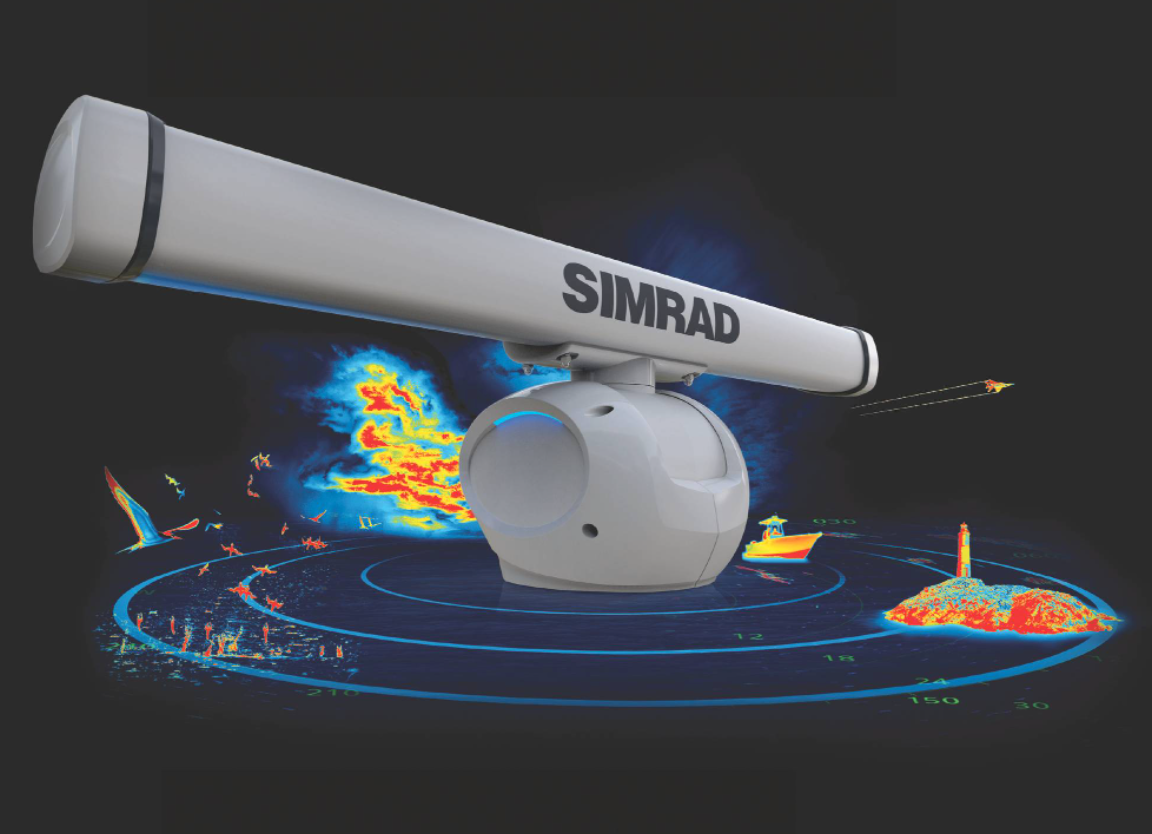
- Although broadband radar used to be inferior to the old-school high-powered technology outside the three-mile range or so, they’re closing the gap. Navico has mitigated this problem with its 3G radar, doubling the transmitting power of the original BR-24 and increasing the range by 30%, to 24 nautical miles. Navico’s Broadband 4G radar narrows the gap even more, with maximum range of 36 nm. It also uses unique “beam sharpening” to further boost its effective range. Simrad’s Halo-6 open array is now listed as a 72 nautical mile radar.
Pulse Compression Radar
The Simrad Halo radar offers a hybrid between traditional pulse radar and CHIRP pulse compression technology. Halo Radar uses solid-state electronics to produce low-power pulsed frequency-swept transmissions, like the radar equivalent of CHIRP sonar, delivering excellent range and target resolution with minimal warm-up time, long life, and low emissions. Halo claims maximum ranges of 48 nm for a 3′ (.91 m) wide array, 64 nm for a 4′ (1.22 m) array and 72 nautical miles for a 6′ (1.83 m) array.
Garmin’s new Fantom Pulse Compression Radar, available in 4′ (1.22 m) and 6′ (1.83 m) array sizes, is likewise rated at 72 nm range. Fantom uses the Doppler effect, which Garmin calls MotionScope Technology, to detect and highlight moving targets like small, fast vessels headed your way, flocks of birds or weather cells.
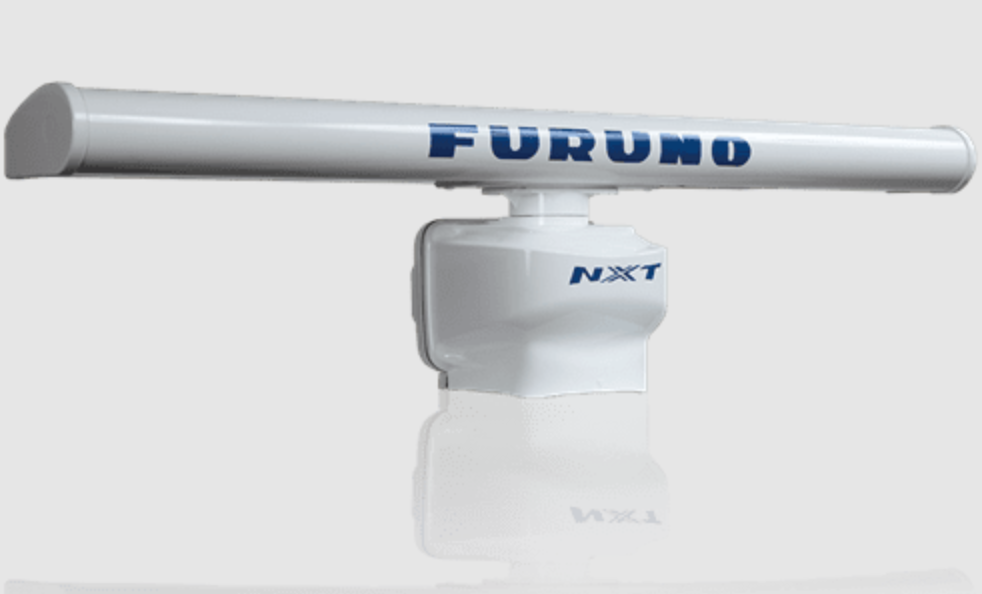
Mounting and Installation
Once you’ve chosen your radar, you need to choose the best location for maximum range, safe operation and minimum blind spots. The antenna must be mounted above head-height because direct exposure to the electromagnetic energy emitted by a radar antenna can be harmful. (This warning applies less strongly to low-emission solid-state radar devices.) The best location, usually the highest point on a powerboat, will give the radar an unobstructed 360° view. Avoid mounting near large masts, horizontal spreaders, stacks, or other solid objects, as they will produce shadows, reflections or blind spots.
Streamlined mounting struts provide a clean way to raise the radar above spotlights, horns or other hardware. Radars have a vertical beam width of about 25°, so a level mounted antenna will project the beam downward about 12.5°. Planing-hulled boats that run with their bow raised may need to shim the back of the mount, or close-in targets ahead of the boat may be invisible.

Wiring is straightforward. A dedicated circuit from the distribution panel, with wire gauge between AWG 7 and 16, typically protected by a 10-30A breaker (depending on the radar’s size) provides power. The antenna on small radome units is powered through the display, connected by a multi-conductor cable that includes positive and negative power leads. Open array radars often have a separate DC power cable for their antenna. The other connections usually include an electronic compass and GPS or other network cables.
Installing radar will provide peace of mind when boating under difficult conditions. Tuning of modern radars is automatic, and the learning curve is reasonably easy. While choosing the right antenna location is critical, installation is within the skill range of the average handy boat owner.